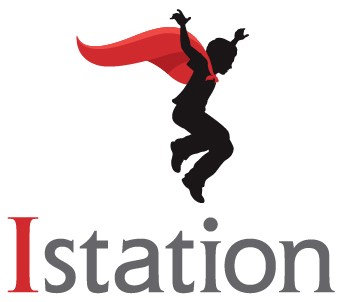About three years ago, Fort Smith School District’s K-2 teachers performed 3,000 individual, face-to-face assessments to identify students at risk in literacy skills. The next year, the Arkansas district used Istation, as a state-approved initial screener that also provides interventions and other resources to support teachers and students alike.
“Using Istation as an initial screener really saves teachers time,” says Catherine Ford, intervention/dyslexia coordinator. “It’s much quicker to give an assessment to a whole class or a small group than to assess students individually, on paper, for each skill.”
“And it’s very engaging,” adds Elementary Math Coordinator Debra Ellison. “One reason we chose Istation was because it holds students’ attention. It’s much more motivating than using pencil and paper or worksheets.”
Research-based assessments
Powered by the science of reading, Istation is grounded in the National Reading Panel’s “Big Five” essential components of effective reading instruction: phonemic awareness, phonics, fluency, comprehension and vocabulary. At Fort Smith, it is used for state-mandated formative testing of all students, as well as for state-mandated initial screening of students in kindergarten through second grade.
Students are initially screened by completing Istation Indicators of Progress (ISIP™) subtests on phonemic awareness, letter knowledge and spelling. The assessments, grounded in research, can be done individually or in small or large groups.
“Istation helps us catch kids early so we can provide targeted interventions.”
“The results are instant,” Ford says. “If a student is identified as in need of support, we do a more targeted diagnostic assessment to determine exactly where to start with intervention.”
Intervention resources
Teachers then do face-to-face interventions, with access to Istation resources such as downloadable student lessons, books and other materials. “Teachers can modify Istation interventions according to their needs,” Ford says. “Students can use Istation as a center or to practice skills.”
The assessments are repeated monthly as part of the district’s general Istation program, so K-2 students are being monitored throughout the year.
“The monthly ISIP allows us to constantly monitor students’ progress,” Ford says. “If at any point it looks like a student is struggling, then we look at them for intervention.”
‘Catch them early’
During the 2017-18 school year, 524 Fort Smith students were identified with dyslexia characteristics, and 459 students received intervention. The follow ing year, 583 students were identified, and 513 received intervention.
ing year, 583 students were identified, and 513 received intervention.
“The numbers are rising because we are getting better at recognizing and identifying students with the characteristics,” Ford says. “Istation helps us catch kids early so we can provide targeted interventions; it’s much easier to intervene at K-2 than to remediate later.”
For more information, please visit istation.com







